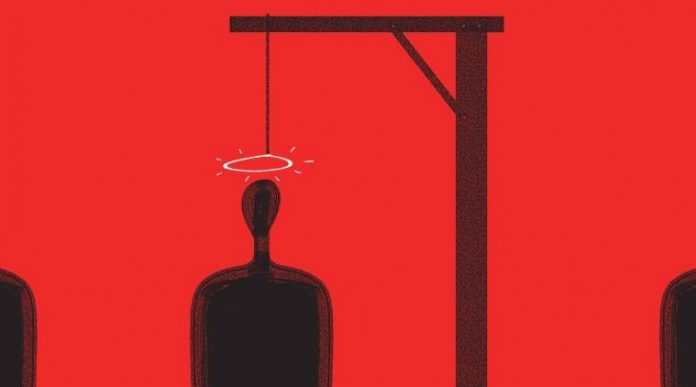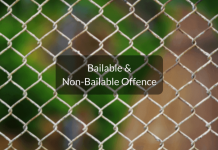This article has been written by Aryaman from Rajiv Gandhi National Law University, Punjab. The following article talks about the status of Death penalty in India in the current scenario.
The death penalty has existed since time immemorial and in almost every country. Although thinkers like Plato were of the view that it should only be granted in irremediable cases which we now know by rarest of rare doctrine. There are few crimes so heinous that even the death sentence does not seem enough. In countries that have a dictatorial form of government, criminals are hung publicly or are subjected to death by mob pelting stone, or are shot dead and many more ways, but in a country like India that preaches democratic values, the above-mentioned methods cannot be practiced.
The question arises what more than that? Life is the biggest asset of any person and taking away someone’s life is the biggest punishment that can be thought of. For brutal crimes many social activists, political parties, and common people advocate the penalty of death. Death sentence is the ultimate punishment that can be awarded to a criminal. But is it enough? Will adding the clause for the death penalty in the rulebook end the ill-practices prevalent in the society? Will it create fear in the mind of criminals? Will it restrain the criminals from committing crimes? Will it put a full stop on the crimes? All these questions are a big exclamation mark. Throughout this article, we will try to find answers for all the aforementioned questions.
To know more about death penalty in India and related landmark judgements, please watch the video below:
Death Penalty has over the decades been a subject debate and dispute in India. The death sentence is a colonial rule law that remained after independence. Nathuram Godse and Narayan Apte were the first ones to be hung after being charged guilty for the assassination of Mahatma Gandhi. It is still in practice and is a focal point for researchers and legislators since always but till now no consensus or conclusion could be drawn. Figures about the execution in India are not exactly known. Government records and the figures claimed by experts and scholars are way apart. The government records read that the people executed till now are in double-digit while other non- government organizations and research works claim that about 1500 people were executed from 1953 to 1963 alone. There are no concrete records for this but chances are that the numbers are on the higher sides of statistics. Over the years India has made its stand clear that it does not stand in favor of the abolition of death sentence which it proved by voting against the moratorium on capital punishment, called by the United Nations General assembly first in 2007 and then stood by its decision in 2012 as well. There are many international Human Rights Organizations such as Amnesty International, European Centre for Human Rights, and others that advocate the abolition of the death penalty but India refuses to support the claim.

Death sentence in India can be read in the cases of being part of a criminal conspiracy to commit a capital offense, waging war against nation, abetting rebellion amongst the Indian Armed Forces, Murder, inciting a minor to commit suicide, kidnapping, drug trafficking, rape cases to name most of them. for all the mentioned offenses the punishment is that of to be hanged by the neck till death. The Indian Judicial system is based on the principle of deterrent measures. Rather than punishing convicts it aims to prohibit others from committing the same thing in the future and to protect society as a whole. If deterrence to the crimes is concerned the death penalty has not been proved effective. Of course to some criminals it has caused a sense of fear for the crime and has prevented them from committing the crime. Murder is an offense for which a death sentence is awarded but has the scope of punishment caused remarkable deterrence. Let us see the world bank graph regarding the same first and then interpret it.
The graph shows the rate of murders in India and it does not show any remarkable change. It decreases and again increases, so the rate is more or less similar. Hundreds of criminals are on death row. They have been ordered to be hanged till death but still it could not deter much. Straightaway declining that it had not brought any change will not be just because as the graph presents we may claim that the death penalty is a reason behind it, which cannot be denied even if it is not the major reason. The reason could also be improved law and order situations.
Now if we shift our focus to rape cases, the most sought after rape case in India is Nirbhaya Rape Case. The incident took place on the night of 16 December 2013, when 6 vermin who looked like men forcibly raped her, removed her intestines, and left her on the road to die. It would be wrong to call them humans, they were a shame on humanity. 4 of the 6 convicts were hanged by the neck till death recently. The demand for their death was high since the day of the rape. One Ram Singh died earlier. The thing to note here is that the one who raped her twice and has put an iron inside her organs and pulled her intestines out was a minor and he served 3 years in Juvenile Home and is roaming free now. It was evident to the nation that except the minor others will be hanged but yet it did not stop others from committing the same crime. In 2019 there were numerous cases reported regarding rape. One case was of Andhra Pradesh where 6 people of whom 3 were minors raped a 16-year-old girl for 5 consecutive days. It happened a few days before rape one of the accused befriended with her and then took her to a room where he along with his 5 friends raped her. The girl escaped somehow and complained. The Home Minister said that deterrent steps will be taken.
Another popular rape case was the Kathua rape case where the victim was murdered after being raped. An 8-year-old girl was raped and brutally murdered in Kathua district of Jammu and Kashmir. The main man of the incident was the Village head, policemen were also included. The incident shook the nation. One of the 7 accused was a minor and he got the benefit of being a juvenile. There have been cases where even a 4-year-old was raped in Aligarh district of Uttar Pradesh. An 11-year-old was raped and killed in Unnao district of Uttar Pradesh. If after having such strict laws against the commission of rape and murder of a girl who is under the age of 12 years people are targeting small girls, not only they do not fear law but also they are not in the proper state of mind, more than a legal wrong this is a moral wrong. They feel like murdering the victim after assaulting will end the whole case. A famous case in this regard was that of Dr. Priyanka Reddy who got trapped with the two who offered her help. They took her to a deserted place. She was raped and afterward the rapists burnt her body and threw it 25 km away from the place they picked her up. Such cases show fear in the mind of people regarding the punishment they might get. Had there not been the provision of death sentence in a rape case the victim might have been left alive by them. Fearing the opening up of the crime and getting convicted made them carry out another crime to cover an old one.
In another case, a 25-year-old man raped a nine-month-old girl and killed her. The incident happened when her parents were sleeping; the man came and took the girl to the terrace. The parents found their daughter and took her to hospital where she was declared brought dead. In yet another case, an air hostess was raped by her colleague when she went with him for drinks. It was alleged by her that along with her colleague two friends of his also assaulted her. The issue with this case is that the convict knew the outcomes of the conduct still he did it. He cannot resist his sexual appetite. He did not kill her after sexually assaulting her which means that at the time he was committing the crime he had no sense of what his actions could lead to. This is the main issue with criminal minds: their appetite, desire overcomes everything, it takes them to a state where they could not differentiate between fair and unfair, morally and legally correct or incorrect, they are so much into the moment that they forget about everything and commit the crime.
One last example is that of the Unnao rape case in which the doer was a sitting MLA of the ruling party. He raped a minor girl brutally and then attacked her through her family. His goons threatened them. An FIR was lodged against the victim, the goons killed the father of the victim, she got fed up with the happening and decided to immolate herself outside the Chief Minister’s residence and in this way the matter came to light. Her vehicle was attacked when she was moving with her lawyer and relatives. Her uncle got a 10-year jail term in a complaint filed by the convict’s brother. She wrote to the Chief Justice of India and the Supreme Court took cognizance of the case. All the accused were charged guilty. In this condition there did not seem any fear in the acts of the criminal while on the other hand the victim faced legal obligations as well. Here a formal lawmaker misused his power defying the provisions of law. When people sitting at the chairs will behave this way who can be expected to deter. Here the person was a public representative, he knew all the provisions under which he could be charged while he was committing the crimes but the conceitedness of power made him commit one crime after the other. He might have thought that he is the law. In the above-mentioned examples, we have covered most of the types of crimes related to murder and rape.
We know that after the Nirbhaya Rape Case in 2013 the government had made a provision for awarding death to the sexual offenders in case the offense leads to death. About a year back we witnessed a major amendment in laws related to the Prevention of Child Sex Offences (POCSO) which followed an increase in the number of rape cases from 8541 in 2012 to 19765 in 2016.
Despite all these amendments Indian Judicial system still hesitates in awarding the death penalty. It sticks with the rarest of rare cases. The interpretation of which is left to the discretion of the court. This decision engendered the discussion of it being right or wrong. Many experts welcomed the decision but about the same number opposed it too. The debate was whether this decision will be able to provide the deterrence and if able is this much deterrence enough. The flaw with the law is that the provisions which carry the law are not perfect, the intention may be good, but the law of awarding the death penalty never yielded the required deterrence but only forced up the level of crime in society. If a girl was raped and there is no room for the death penalty then the convicts in most cases leave her alive. In Nirbhaya case it took about 7 years as the case was pending there. This gives more courage to the criminals and they then commit more and more crime without the fear of being convicted. In this article we talked about the matters that came to be reported there will be about the same number of people who got assaulted sexually but due to some reason they could bring it to the knowledge of authorities.
Source: Reuters
The cases do not seem to be reducing. In the country, implementation of any law is a big challenge. Despite the strict laws that are in favor of the victim, there are still many who get raped and don’t come out. In a few parts of rural India when a girl is raped, she was ordered to marry the rapist. Such is the rigidity of our society. So, there occurs no prudent reason that the criminals will fear. The death penalty puts the life of a victim at greater risk. The culprits surely would not leave the victim alive. No victim means no one to testify against the culprits. A former Supreme Court Judge says there is a tendency that the culprit would dodge the law in any possible way.
The one case that most fits the above-mentioned characters is the Unnao rape case, where a powerful lawmaker dodged the law in every possible way. People don’t want to take the battle with strong players, he was the one who got reported and the country outraged. Many strong people exploit their workers and servants sexually and those cases are never reported. Deterrence is not seen anywhere.
The Law Commission of India also recommended the abolition of the death penalty and it suggested that abolition of the death penalty citing the reason that it is not deterrent enough.
Also, the death penalty violates the right to life. It is a cruel, vicious and inhuman conduct. It violates the basic principles of human rights.
LawSikho has created a telegram group for exchanging legal knowledge, referrals and various opportunities. You can click on this link and join:
 Serato DJ Crack 2025Serato DJ PRO Crack
Serato DJ Crack 2025Serato DJ PRO Crack










 Allow notifications
Allow notifications



